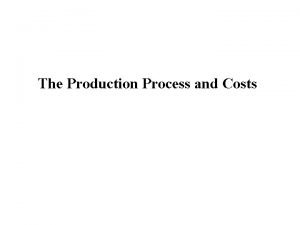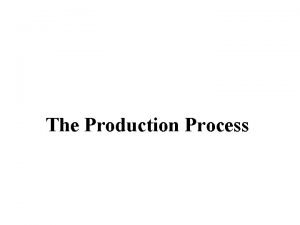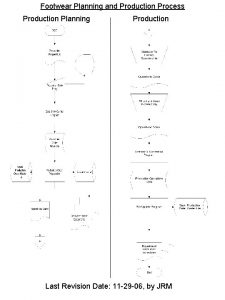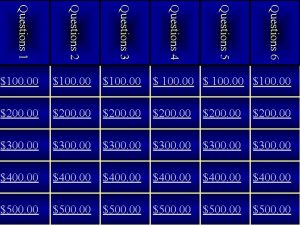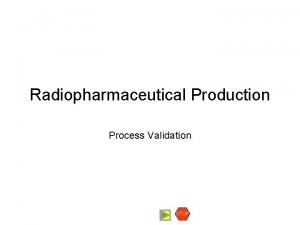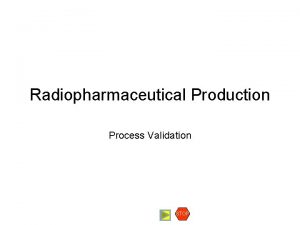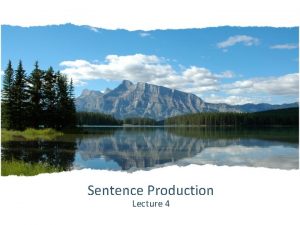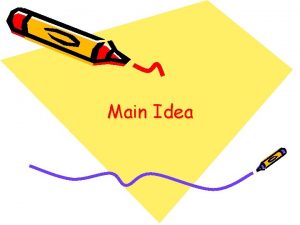Lecture 7 Production Main questions 1 The process























- Slides: 23

Lecture 7 Production

Main questions 1. The process of production and it’s objective 2. Production Function 3. Time and Production in the shortrun 3. 1. Average, Marginal and Total Product 3. 2. Law of diminishing returns 4. Producer’s behavior 4. 1. Isoquant and Isocost 4. 2. Cost minimization (Producer’s choice optimisation)


Production is the process of altering resources or inputs so they satisfy more wants. n Production, more specifically, the technology used in the production of a good (or service) and the prices of the inputs determine the cost of production. n Within the market model, production and costs of production are reflected in the supply function. n

Production units n n n A plant is a physical unit of production. The plant is characterized by physical units of inputs, such as land (R) or capital (K). This includes acres of land, deposits of minerals, buildings, machinery, roads, wells, and the like. The firm is an organization that may or may not have physical facilities and engage in production of economic goods. In some cases the firm may manage a single plant. In other instances, a firm may have many plants or no plant at all. Unless specifically identified, the production and cost relationships will represent a single plant with a single product.

A production function is a model (usually mathematical) that relates possible levels of physical outputs to various sets of inputs. It shows the maximum amount of the good that can be produced using alternative combinations of capital (K) and labor (L): Q = f (L, K, technology, . . . ) n Here we will use a Cobb-Douglas production function that usually takes the form: Q = ALa Kb n

production technology means the quantitative relationship between inputs and outputs. There are two kinds of technologies: n Labor-intensive technology relies heavily on human labor instead of capital. n Capital-intensive technology relies heavily on capital instead of human labor.

To find out which is more effective we use such terms as: n 1) Technical efficiency defined as a ratio of output to input: Efficiency Technical = Output/ Input n 2) Economical efficiency defined as a ratio of value of output to value of input: Efficiency Economical = Output value / Input value

There are four time periods used in the analysis of production: "Market period" – a period of time in which the producer cannot change any inputs nor technology can be altered. Even output (Q) is fixed. n "Short-run" – a period in which technology is constant, at least one input is fixed and at least one input is variable. n "Long-run" – a period in which all inputs are variable but technology is constant. n "The very Long-run" – during the very long-run, all inputs and technology change. n Cost analysis in accounting, finance and economics is either long run or short-run

In the short run, the relationship between the physical inputs and output can be describes from several perspectives: Total product (TP or Q) is the total output. Q or TP = f(L) given a fixed size of plant and technology. n n Average product (APL) is the output per unit of input. AP = TP/L (in this case the output per worker). APL is the average product of labour. n Marginal product (MPL) is the change in output "caused" by a change in the variable input (L), so MPL = ∆Q/∆L.

The relationship between the physical inputs and output I 1 I 2 1. Note that the marginal product is increasing in area I 1 and decreasing in I 2 2. The average product increase in area I 1 and until point B 3. Also marginal product curve go through average product curve at highest point B 4. If "too many" units of the variable input are added to the fixed input, TP can decrease, in which case MP will be negative

Law of diminishing returns means that as the level of a variable input rises in a production process in which other inputs are fixed, output ultimately increases by progressively smaller increments. It says that if we keep increasing the employment of an input, with other inputs fixed, eventually a point will be reached after which the resulting addition to output (i. e. , marginal product of that input) will start falling.

Isoquant n is just an alternative way of representing the production function. Consider a production function with two inputs factor 1 and factor 2. n is the set of all possible combinations of the two inputs that yield the same maximum possible level of output.

In general, isoquants are downward sloping – the more labor we use, the less capital we need. It is bowed inward because of the law of diminishing marginal productivity. In the case of Cobb-Douglas Isoquants inputs are not perfectly substitutable.

slope = marginal rate of technical substitution (MRTS). The marginal rate of technical substitution (MRTS or RTS) shows the rate at which labor can be substituted for capital while holding output constant along an isoquant: or

Linear isoquants mean that capital and labor are perfect substitutes Leontief Isoquants mean that capital and labor are perfect complements Q = a. K + b. L MRTSKL = b/a Linear isoquants imply that inputs are substituted at a constant rate, independent of the input levels employed Capital and labor are used in fixed-proportions. Q = min {b. K, c. L} Since capital and labor are consumed in fixed proportions there is no input substitution along isoquants (hence, no MRTSKL).

Isocost line n – a line that represents alternative combinations of factors of production that have the same costs. Or in other words, the combinations of inputs (K, L) that yield the producer the same level of output. The combinations of inputs that produce a given level of output at the same cost can be expressed as: w. L + r. K = C Rearranging, K= (1/r)C - (w/r)L

For given input prices, isocosts farther from the origin are associated with higher costs Changes in input prices change the slope of the isocost line

The firm is operating efficiently when an additional output per dollar spent on labor equals the additional output per dollar spent on machines. So that marginal product per dollar spent should be equal for all inputs:

Return to scale K P 5 D Q=90 4 A Q=80 3 C Q=60 2 Q=30 B 1 Q=10 0 5 10 15 20 25 L

Decreasing returns to scale n If an increase in all inputs in the same proportion k leads to an increase of output of a proportion less than k, we have decreasing returns to scale. n This is also known as "diseconomies of scale, " since production is less cheap when the scale is larger.

Constant returns to scale n If an increase in all inputs in the same proportion k leads to an increase of output in the same proportion k, we have constant returns to scale

Increasing returns to scale n n n If an increase in all inputs in the same proportion k leads to an increase of output of a proportion greater than k, we have increasing returns to scale. This might occur because in the larger work force, some programmers can concentrate more on particular kinds of programming, and get better at them). This is also known as "economies of scale, " since production is cheaper when the scale is larger
 Production multimedia
Production multimedia 01:640:244 lecture notes - lecture 15: plat, idah, farad
01:640:244 lecture notes - lecture 15: plat, idah, farad Ways of expressing future time
Ways of expressing future time Types of main idea
Types of main idea Void main int main
Void main int main Hát kết hợp bộ gõ cơ thể
Hát kết hợp bộ gõ cơ thể Bổ thể
Bổ thể Tỉ lệ cơ thể trẻ em
Tỉ lệ cơ thể trẻ em Voi kéo gỗ như thế nào
Voi kéo gỗ như thế nào Chụp tư thế worms-breton
Chụp tư thế worms-breton Bài hát chúa yêu trần thế alleluia
Bài hát chúa yêu trần thế alleluia Các môn thể thao bắt đầu bằng tiếng đua
Các môn thể thao bắt đầu bằng tiếng đua Thế nào là hệ số cao nhất
Thế nào là hệ số cao nhất Các châu lục và đại dương trên thế giới
Các châu lục và đại dương trên thế giới Công thức tính thế năng
Công thức tính thế năng Trời xanh đây là của chúng ta thể thơ
Trời xanh đây là của chúng ta thể thơ Mật thư tọa độ 5x5
Mật thư tọa độ 5x5 Phép trừ bù
Phép trừ bù độ dài liên kết
độ dài liên kết Các châu lục và đại dương trên thế giới
Các châu lục và đại dương trên thế giới Thể thơ truyền thống
Thể thơ truyền thống Quá trình desamine hóa có thể tạo ra
Quá trình desamine hóa có thể tạo ra Một số thể thơ truyền thống
Một số thể thơ truyền thống
























